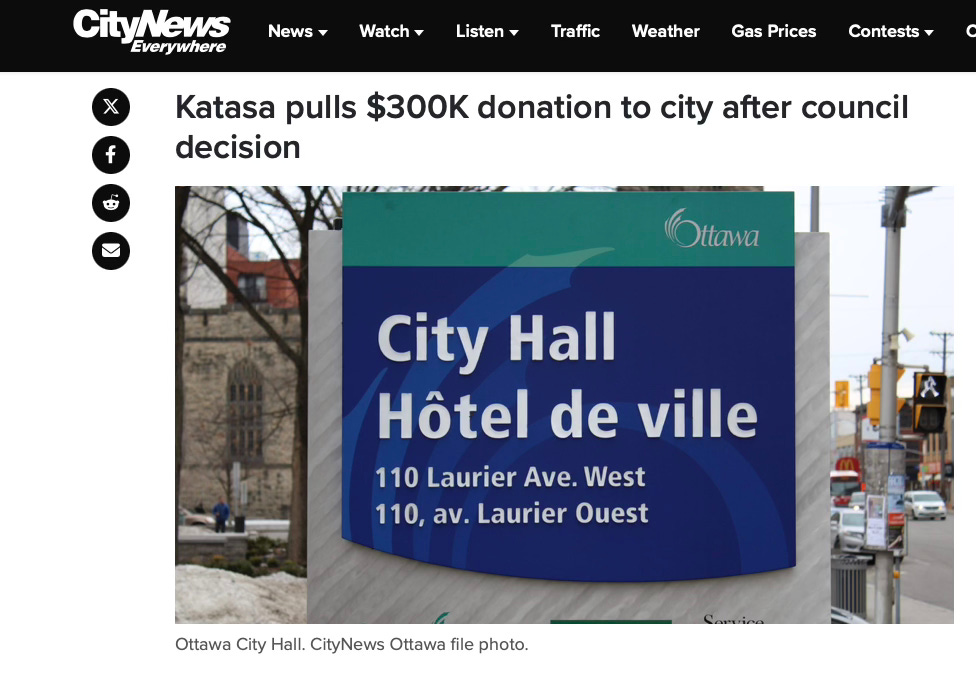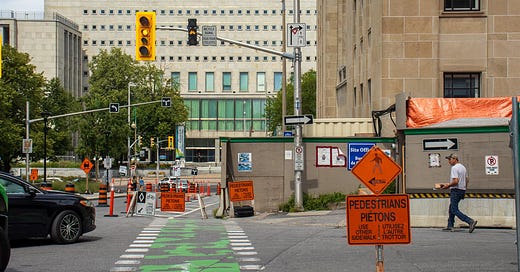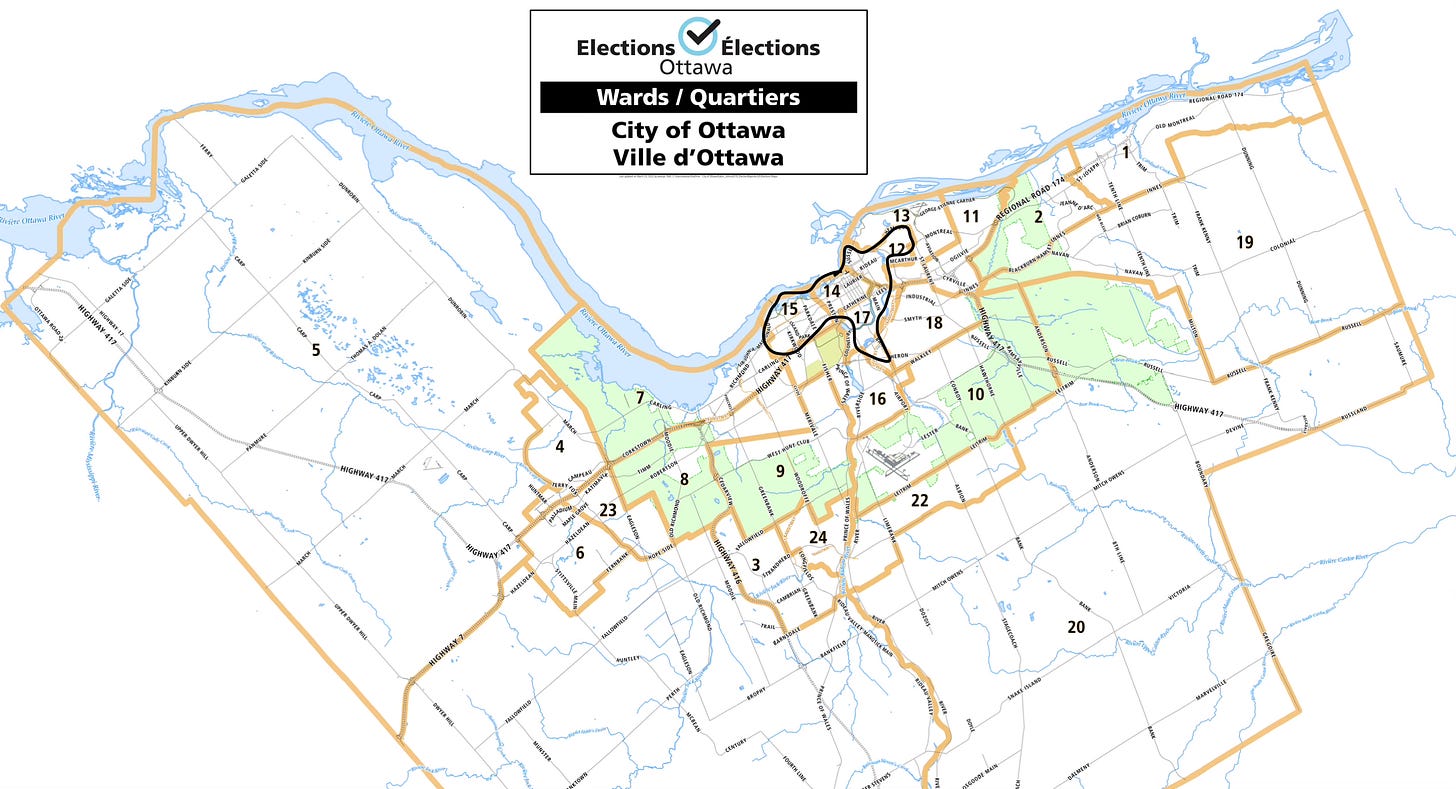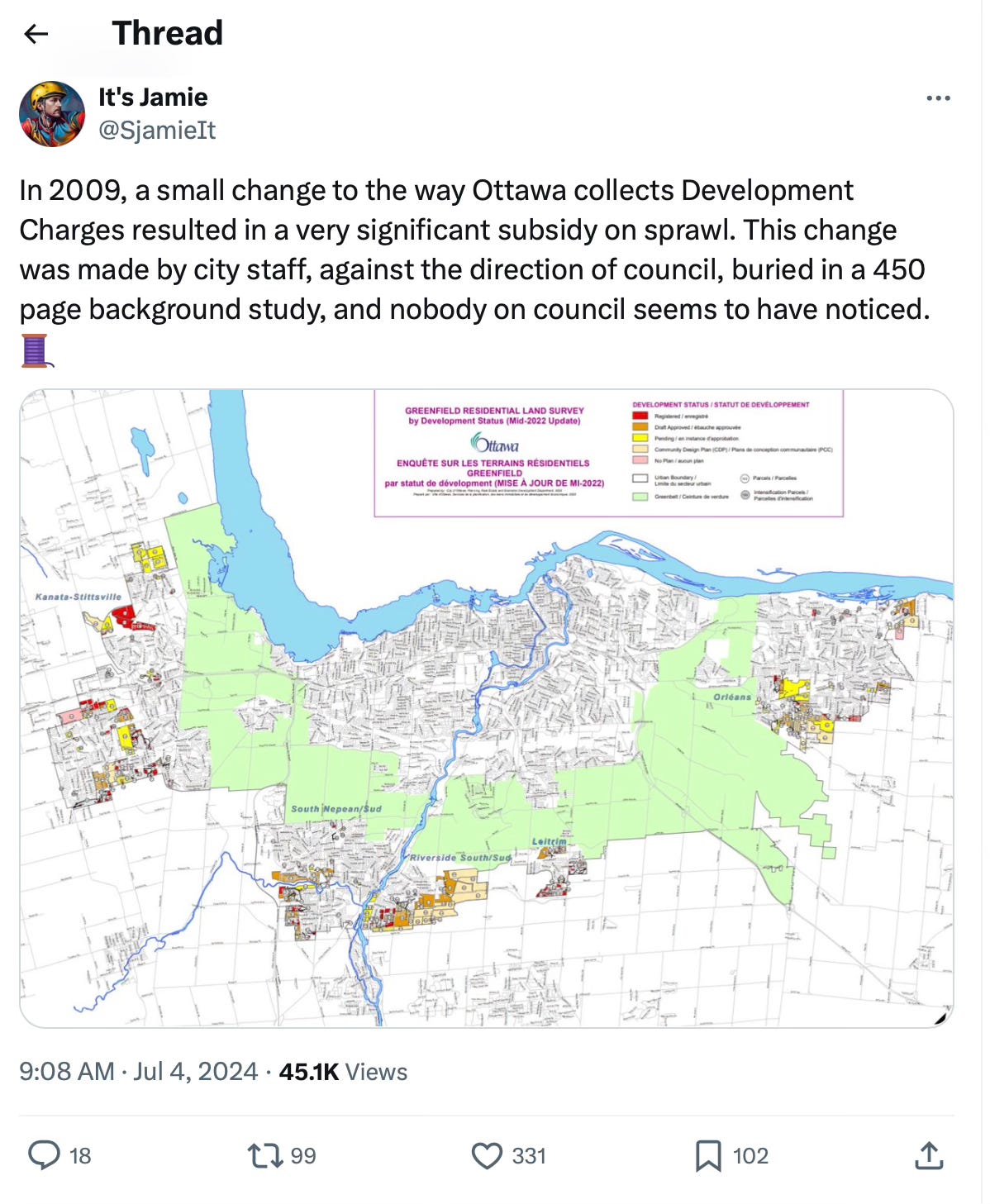The City of Ottawa has long neglected downtown. There is a lack of park space and street trees, there tragically seems to be more homeless people than ever, and despite densifying and building many more apartments, downtown residents are seeing little of the additional property tax money. Below, I outline what I’ve found in my 2+ years as Transportation Chair of the Centretown Community Association to be some of the biggest roadblocks to urban improvements.
This article is part 1 of 3, inspired by the Centretown Community Association’s push to improve Kent Street, and us seemingly being shut down at every opportunity, despite having the support of our councillor. To demonstrate our support for Kent and to show our care for the community, we have adopted Kent Street. We’ll be hosting a Kent Street clean up on October 5, hope you can join us.
Traffic calming rules

The city of Ottawa’s neighbourhood traffic calming program was designed with the suburbs in mind, and does not apply well downtown. The program only applies to local and collector streets and does not apply to arterial roads, meaning that every North/South street in Centretown besides Percy, Bay, and the Golden Triangle are not eligible for the program.
Solution: Amend the traffic calming program to apply on select urban arterial roads.
Lack of urban voices at council
Just 4 of the 24 Ottawa city councillors live in truly urban wards (Troster, Plante, Menard, and Leiper. Note I am not using the city’s generous definition of “urban”). This leads to a lack of voices, and more importantly a lack of votes, on issues that primarily affect urban residents.
Solution: Similar to how the City has a rural affairs committee, implement an urban affairs committee for downtown councillors and residents to have a stronger voice. Perhaps even host an urban summit, similar to the rural summit that the city is preparing for.
Budget priorities set city-wide
Despite the most urban wards being the most productive tax wise, much of our revenue is spent in other areas of the city. The City of Ottawa found that it costs $465 per person each year to serve new low-density homes built on undeveloped land. Meanwhile, high density infill development like apartment buildings leaves the city with an extra $606 per capita each year.
The budget is set city wide, and this leads to money being spent in different areas than it is earned. When you add up the suburban funding gap and the lack of urban voices at council, you end up with a lot of money being transferred from downtown to the suburbs.
Solution: Implement a “participatory budget” where each ward can decide where a small part of their direct property tax revenue will be spent. This will get folks more engaged in the civic process, increase fairness by keeping more funds where they are earned, and encourage communities to increase their taxable revenue. This has the knock on effect of having communities see some of the benefit of density and intensification in the ward.
Urban development charges being spent elsewhere
As fellow Centretown Community Association member @sjamieit has outlined better than I ever could, much of Ottawa’s urban development charges are spent elsewhere in the city. This is not only unfair, it encourages NIMBYism by having residents see less of the benefits of the construction and increase in density near them. When big buildings go up near you in urban areas, it should mean better transit, cleaner parks, and modernized community centres, not that you are funding a suburban road expansion nowhere near your home.
Solution: Separate development charges by area collected. A good start would be inside the green belt, suburban outside the greenbelt, and rural.
Blocking voluntary community benefits contributions

In a perfect world, I don’t believe in one-off deals where developers contribute money for bike lanes or parks nearby outside of traditional development charges or property taxes. However, our mishandling of other funds has made developer donations to communities to provide quality of life improvements when adding density an attractive option.
Kent Street is an unsafe urban arterial, with multiple tall buildings going up nearby. Wouldn’t it be great if we could use additional funds from a developer to provide safer crossings for people walking, or bike lanes for all the people in new apartments that won’t have parking spots?
Solution: Support a transparent set of rules and guidelines for voluntary community benefits contributions.
Thanks for reading, and please consider sharing with a friend. Please consider signing up for our Kent Street clean up on October 5. Parts 2 and 3 will cover the why and how of improving Kent Street.








I came across your substack - very beneficial views for us in Lowertown.